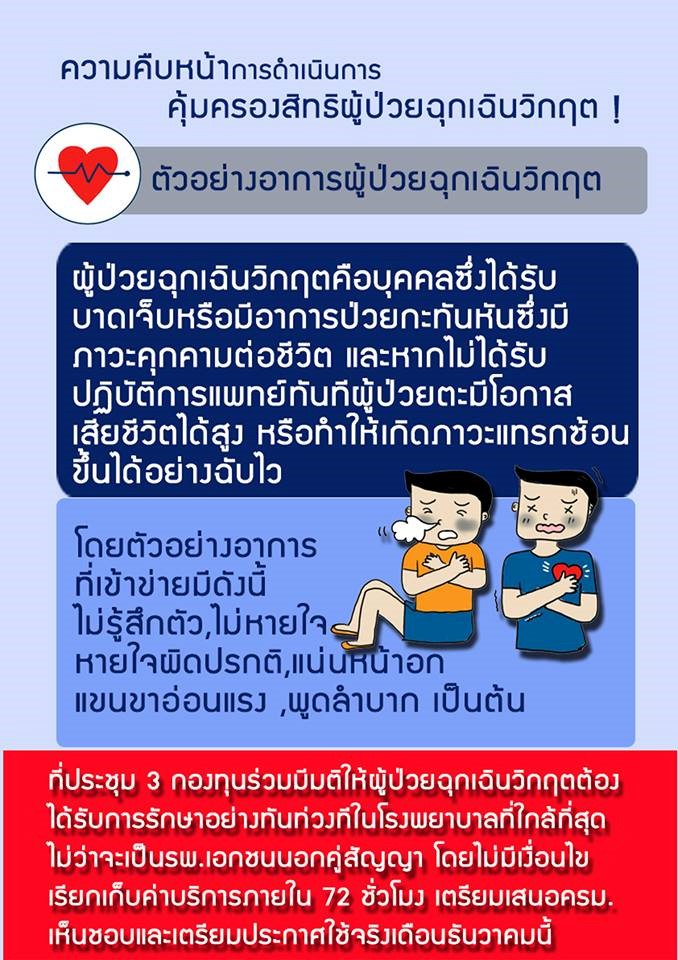|

Lots of our members are probably curious about the progress of the policy of the implementation of the Civil Protection emergency crisis policies, “Emergency Treatment, All good, All right,” the admission to the nearest hospital. Today, we have some updates to share with you.
Mr. Anuchar Setthasathien, M.D., the Secretary General for Emergency Medicine (NIEMS) explains that Ministry of Public Health, NIEMS, National Health Security Office, Social Security Office and the Comptroller General's Department have resolved to prepare guidelines to protect patients ’rights and financially support by when there is an emergency crisis to be unconditionally admitted and treated at nearest private hospitals regardless.
The critical emergency patients must be treated in the nearest hospital, regardless of which hospitals, whether it is a hospital of the three State funds or out of parties. A hospital will sort and classify patients according to the NIEMS’s standard. NIEMS’s EMCO Service center stands by 24/7 for consulting assistance, in case of a diagnostic mismatch between the onsite doctor and the Emergency Command Center. The hospital who provides care to emergency patients will receive a compensation for medical expenses based on NIEMS’ rate, of which incurred during those first 72 hours from patients’ own group of State fund accordingly.
Emergency patients will get immediate treatment even if a diagnostic mismatch. At the EMCO meeting finalizes that patients must be treated first, the decision of who will pay the bills will be discussed and determined later. The most crucial concern is that the critical patients must not be neglected and unattended in an emergency room regardless. After six months of this implementation, it will be reviewed for improvement again.
However, this proposal will be presented to the board of States Fund for reconsideration, then getting an approval from the Ministers. Hopefully, it will be approved and becomes effective and practical within December this year.
Mr. Anuchar Setthasathien, M.D. adds that emergency patients is a person who is injured or suddenly ill with a life-threatening condition that if patient is not provided a CPR to restore and maintain breathing and circulation to provide oxygen and blood flow to the heart, brain, nervous system and other vital organs. Patients are at high risk of death or some other medical complication may easily occurred quickly. Those symptoms include unconsciousness, stop breathing, irregular breathing, congested chest, arms and legs weakness or speech difficulties.
The preparation of this For the benefit of patients, emergency crisis. To be hospitalized and is near both public and private hospitals. The emergency patient safety by reducing the loss of emergency patients. If you have an emergency Should call the hotline before 1669 to be reassessed. And admitted by the system. It also avoids the problem of being charged with medical bills.
|